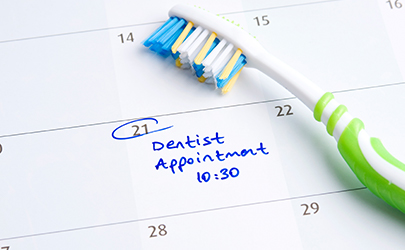Patients will often ask our Morden dentists about whether or not an overbite can be fixed using clear aligners. The short answer to this question is yes, but first, we should explain what an overbite is, why it is an issue and requires treatment and what that treatment involves.
Overbites Explained
Overbites (also referred to as a deep bite) is when your upper front teeth overlap with your lower front teeth. While most people have at least a little bit of an overbite (where the upper teeth extend over the bottom ones by 2 to 4 millimetres, it can become a real oral health issue when it is greater than this and causes abnormal wear and tear on your teeth or even jaw pain.
This starts to happen where the normal 2 to 4 mm is extended to 4 to 6mm or greater, at which point the condition will need correction. You might hear your dentist describe overbites in terms of percentage. A range of 5 to 25 percent is ideal.
The vertical nature of an overbite is what distinguishes it from an overjet, which is horizontal and causes the upper teeth to protrude past the bottom teeth at an angle. With an overbite, there is no angle as the upper teeth remain either straight or pointing downward.
How to Fix an Overbite
When the upper teeth come down over the bottom teeth significantly, this condition should be treated to prevent cracking, excessive wear or chips in teeth.
The most commonly occurring reason for an overbite is that the lower haw is just a bit smaller than the upper jaw. This means that the lower teeth rest behind the upper teeth and move down as abnormal wear occurs. You will likely notice that more gum shows on your upper teeth and that your upper front teeth are situated slightly lower than the teeth beside them (the canines or upper side teeth).
Overbites can happen if a patient had a tongue thrusting habit or was allowed to suck on an object - most often a thumb or pacifier - for too long as a child.
Chewing on objects such as pens, erasers or even biting their nails can also cause this problem. It’s not recommended to use clear aligners to fix an overbite if a skeletal problem is the underlying cause.
Why an Overbite Should be Fixed
Oral Health
With an overbite, the chance of wear on your teeth increases as your teeth touch each other each time you open and close your mouth. In the long term, they get shorter and thinner.
Cosmetic Reasons
When your smile, your top teeth noticeably hide your bottom teeth and may cause feelings of insecurity or self-consciousness when smiling for a photo or meeting new people.
How Clear Aligners Can Fix an Overbite
Clear aligners can be used to fix your mild or moderate overbite (if not caused by skeletal issues, which would likely require surgery) by applying continual pressure to the teeth.
Clear aligners can:
- Move your lower teeth downwards to where they should be
- Move your upper teeth upwards to where they should be
The pressure applied by your clear aligners will move your teeth into prescribed, corrected positions, leaving you with a straighter, more symmetrical smile. The clear aligners also move your gum at the same time, to keep the proportions in check.
You’ll need to wear your clear aligners for at least 22 hours per day, removing them to eat, drink and floss your teeth. The series of clear aligners will progressively shift your teeth, and you’ll switch to a new set about every 2 weeks. Your custom treatment plan may entail wearing as many as 26 trays, which equates to one tray every 2 weeks for one year.
Before you begin your treatment, your dentist will be able to show you a digital preview of how your new smile will look by the end of your treatment. The first step is to schedule a consultation with your dentist to find out if you are a candidate for clear aligners.



